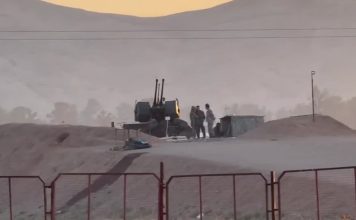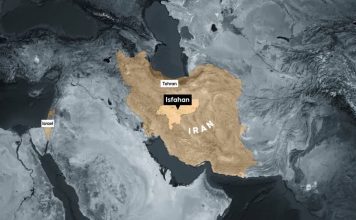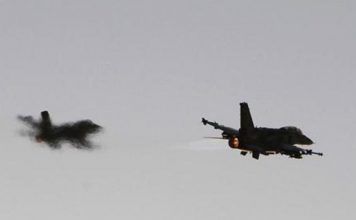
DUBAI, June 6 (Reuters) – Iran presented what officials described as its first domestically-made hypersonic ballistic missile on Tuesday, the official IRNA news agency reported, an announcement likely to heighten Western concerns about Tehran’s missile capabilities.
Iran Unveils Its First Hypersonic Ballistic Missile, State Media Reports
Here are some facts about Iran‘s missile programme, which is one of the biggest in the Middle East.
MILITARY CLOUT
* Hypersonic missiles can fly at least five times faster than the speed of sound and on a complex trajectory, which makes them difficult to intercept.
* Iran says its ballistic missiles, with a range of up to 2,000 km (1,200 miles), are an important deterrent and retaliatory force against the United States, Israel and other potential regional targets. It denies seeking nuclear weapons.
* Despite U.S. and European opposition, the Islamic Republic has said it will further develop its defensive missile programme.
* Concerns about Iran‘s ballistic missiles contributed to then-U.S. President Donald Trump’s decision in 2018 to ditch Tehran’s 2015 nuclear pact with six major powers.
* According to the U.S. Office of the Director of National Intelligence, Iran is armed with the largest number of ballistic missiles in the region.
* The Arms Control Association, a Washington, D.C.-based non-governmental organization says Iran‘s missile programme is largely based on North Korean and Russian designs and has benefited from Chinese assistance.
* The Arms Control Association says Iran‘s short-range and medium-range ballistic missiles include Shahab-1, with an estimated range of 300 km, the Zolfaghar (700 km); Shahab-3 (800-1,000 km), Emad-1, a missile under development (up to 2,000 km) and Sejiil, under development (1,500-2,500 km).
CRUISE MISSILES
* Iran also has cruise missiles such as Kh-55, an air-launched nuclear-capable weapon (up to 3,000 km), and the advanced anti-ship missile the Khalid Farzh, (about 300 km) capable of carrying a 1,000 kg warhead.
Israel Accuses Iran of Using Civilian Ships As ‘Floating Terror Bases’
REGIONAL ATTACKS
* Saudi Arabia and the United States have said they believe Iran was behind a drone and missile attack on Saudi Arabia’s prized oil facilities in 2019. Tehran denied the allegation.
* In 2020, Iran launched missile attacks on U.S.-led forces in Iraq, including the al-Asad air base, in retaliation for a U.S. drone strike on an Iranian commander whose killing raised fears of a wider Middle East conflict.
* More recently in 2022, Iran showed its prowess when it attacked Erbil in northern Iraq with a dozen ballistic missiles, an unprecedented assault on the capital of the autonomous Iraqi Kurdish region.
BACKING FOR YEMEN’S HOUTHIS
* Yemen’s Iran-aligned Houthi movement has also shown a growing mastery of missile technology. The United States accuses Iran of arming the Houthis, a charge Tehran denies.
* The group said it fired a number of ballistic missiles at Abu Dhabi, capital of the United Arab Emirates, and had also fired several drones at Dubai, the regional business hub.
* In another attack, a base hosting the U.S. military in the UAE was thwarted by U.S.-built Patriot interceptors. The attack sent U.S. troops into bunkers.
SUPPORT FOR HEZBOLLAH
* The leader of Lebanon’s Iran-backed Hezbollah group has said the group has the ability within Lebanon to convert thousands of rockets into precision missiles and to produce drones.
* Last year, Hassan Nasrallah said Hezbollah was able to transform standard rockets into precision missiles with the cooperation of “experts from the Islamic Republic of Iran“.
[aesop_image img=”https://kayhanlife.com/wp-content/uploads/2021/03/2021-03-15T160523Z_937200688_RC2SBM9PGG9Y_RTRMADP_3_IRAN-GUARDS-MISSILES.jpg” panorama=”off” credit=”Iranian missiles are seen at an underground of the new ‘missile cite’ of Iran’s Revolutionary Guards naval unit at an undisclosed location in Iran, in this picture obtained on March 15, 2021. REUTERS./” align=”center” lightbox=”on” captionsrc=”custom” captionposition=”left” revealfx=”off” overlay_revealfx=”off”]
SYRIA
* Iran has transferred indigenous precision-guided missiles to Syria to support President Bashar al-Assad’s fight against insurgents, according to Israeli and Western intelligence officials.
* It has also moved some of its production capacity to underground compounds in Syria, where Assad’s military and other pro-Tehran forces have learned to build their own missiles, those same sources say.
(Reporting by Parisa Hafezi in Dubai, Arshad Mohammed in Washington,Dan Williams in Jerusalem; Writing by Michael Georgy; Editing by Christina Fincher)
OPINION: The Solution to the ‘Iran Problem’ is Regime Change
Prince Reza Pahlavi : ‘The Alternative to the Islamic Republic is the Iranian nation’







